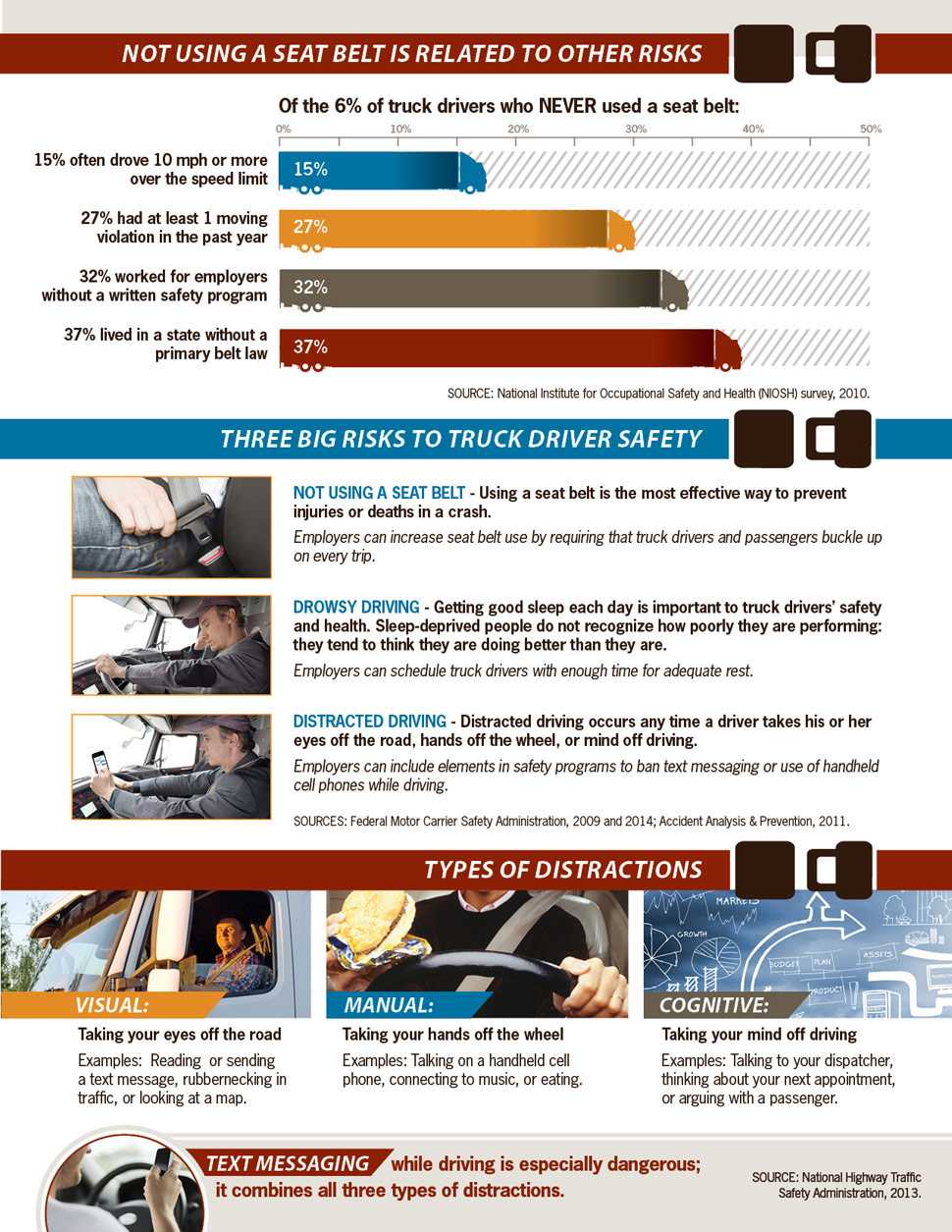Trucker Safety infographic

Many Different Vehicles are Considered Large Trucks
Large trucks have a gross vehicle weight rating of mnore than 10,000 pounds
- Fire truck
- Dump truck
- Ambulance
- Tow truck
- Tractor trailer rig
- Dump truck
SOURCE: Federal Highway Administration.

Not Using a Seat Belt is Related to Other Risks
Of the 6% of truck drivers who NEVER used a seat belt:
- 15% often drove 10 mph or more over the speed limit
- 27% had at least 1 moving violation in the past year
- 32% worked for employers without a written safety program
- 37% lived in a state without a primary belt law
SOURCE: National Institute for Occupational Safety and Health (NIOSH) survey, 2010.
Three Big Risks to Truck Driver Safety
NOT USING A SEAT BELT
- Using a seat belt is the most effective way to prevent injuries or deaths in a crash.
- Employers can increase seat belt use by requiring that truck drivers and passengers buckle up on every trip.
DROWSY DRIVING
- Getting good sleep each day is important to truck drivers’ safety and health. Sleep-deprived people do not recognize how poorly they are performing: they tend to think they are doing better than they are.
- Employers can schedule truck drivers with enough time for adequate rest.
DISTRACTED DRIVING
- Distracted driving occurs any time a driver takes his or her eyes off the road, hands off the wheel, or mind off driving.
- Employers can include elements in safety programs to ban text messaging or use of handheld cell phones while driving.
SOURCES: Federal Motor Carrier Safety Administration, 2009 and 2014; Accident Analysis & Prevention, 2011.
Types of Distractions
VISUAL: Taking your eyes off the road Examples: Reading or sending a text message, rubbernecking in
traffic, or looking at a map.
MANUAL: Taking your hands off the wheel Examples: Talking on a handheld cell
phone, connecting to music, or eating.
COGNITIVE: Taking your mind off driving Examples: Talking to your dispatcher, thinking about your next appointment,
or arguing with a passenger.
TEXT MESSAGING while driving is especially dangerous; it combines all three types of distractions.
SOURCE: National Highway Traffic Safety Administration, 2013.
- Page last reviewed: March 3, 2015
- Page last updated: March 3, 2015
- Content source:
- National Institute for Occupational Safety and Health, Center for Motor Vehicle Safety
- Page maintained by: Office of the Associate Director for Communications (OADC)


 ShareCompartir
ShareCompartir